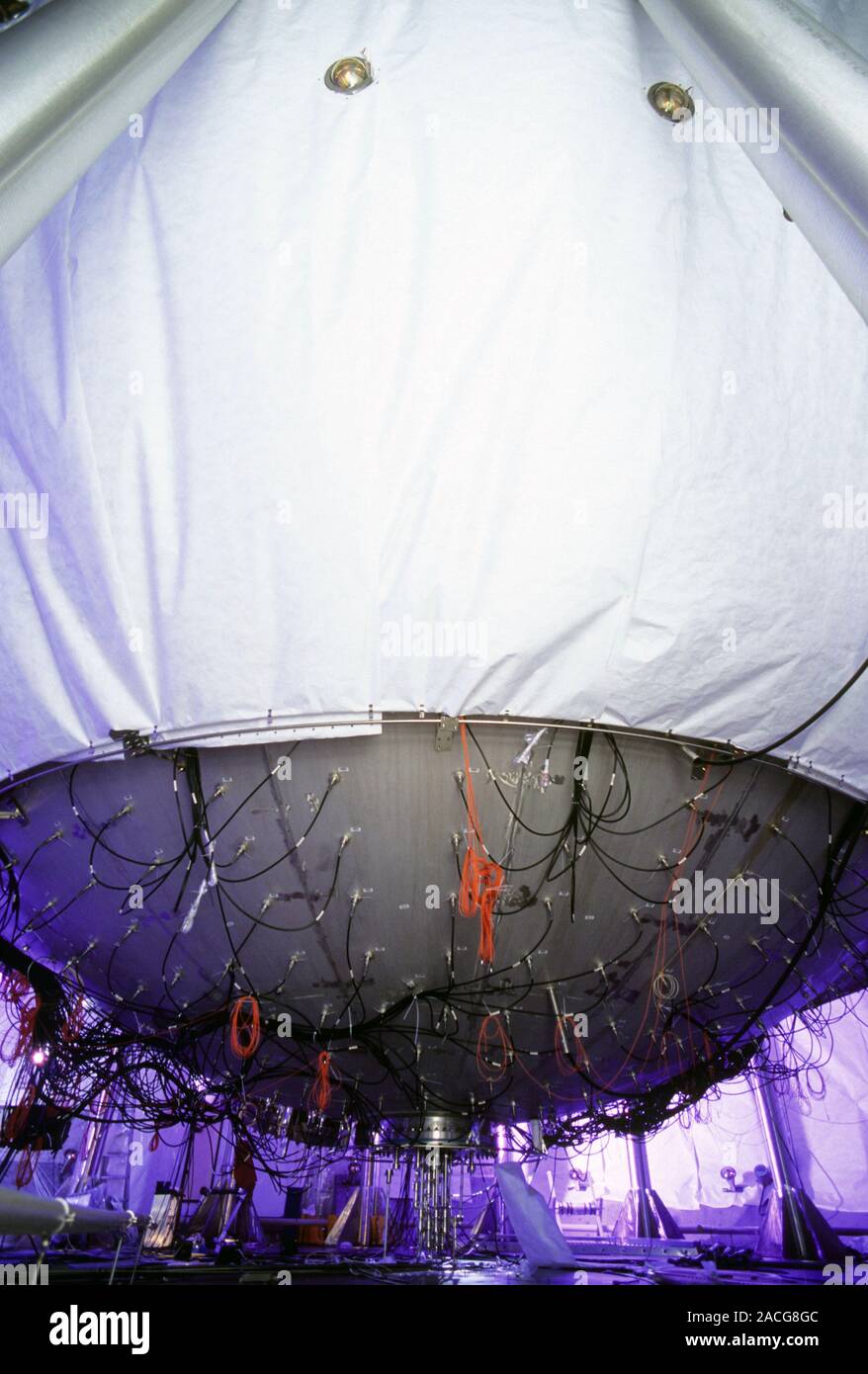In the realm of experimental physics, few endeavors have captivated the imagination as much as the study of neutrinos. These elusive subatomic particles, nearly massless and electrically neutral, are produced in copious quantities by stellar processes, including nuclear fusion in the sun. The Gran Sasso National Laboratory (LNGS), nestled beneath the Apennine Mountains in Italy, epitomizes a pioneering effort in neutrino research. Recently, the Borexino experiment has received the green light to deepen our understanding of solar neutrinos, spurring excitement and deliberation in the global scientific community.
The fascination with neutrinos stems from their inherent traits—subjects of ongoing inquiry that challenge our fundamental understanding of matter and the universe. They interact so weakly with other particles that they can traverse light-years of lead without any significant interaction. This characteristic makes them exceedingly difficult to detect, yet it is precisely this elusiveness that has rendered them a vital link in our quest to elucidate the universe’s most profound secrets.
The Borexino experiment, begun in 2007, is designed to detect and analyze solar neutrinos with unmatched precision. It employs an innovative detection method involving a large spherical detector filled with a liquid scintillator, which fluoresces when a neutrino interacts with atoms in the medium. Situated about 1,400 meters underground, the Gran Sasso site provides an unparalleled shield from cosmic rays, allowing for a cleaner signal from the neutrinos emanating from the sun. This depth is not merely a safeguard; it is an essential component of the experiment’s architecture, enabling the isolation of rare interactions that would otherwise be overwhelmed by ambient radiation.
Several groundbreaking discoveries have emerged from the Borexino experiment that have fundamentally altered the landscape of astrophysics. One notable highlight is the successful detection of solar neutrinos from the entire spectrum of solar fusion processes, including the primary reactions responsible for the sun’s energy output. This achievement has confirmed theoretical models of stellar functioning and provided empirical evidence for the sun’s complexities.
Moreover, the existence of neutrino oscillation—a phenomenon that allows neutrinos to transform from one type to another as they propagate through space—has been corroborated by various experiments, including those conducted at Gran Sasso. This transformation implies that neutrinos possess mass, conflicting with earlier theoretical postulates that classified them as massless particles. The consequences of neutrino mass are far-reaching, encompassing insights into the Standard Model of particle physics and potential implications for phenomena such as dark matter and baryon asymmetry in the universe.
However, the craving for knowledge drives researchers beyond mere detection of solar neutrinos. The Borexino experiment not only seeks to unravel the complexities of solar production but also extends its purview into other realms of particle physics. For instance, investigations into geoneutrinos—the neutrinos produced by radioactive decay of elements such as uranium and thorium within the Earth—are integral for understanding terrestrial processes and dynamics. These neutrinos provide a unique probe, potentially shedding light on the Earth’s internal heat production and geological evolution.
Further reflections on neutrinos lead to profound philosophical considerations. Their pervasive yet elusive nature prompts inquiries into the fabric of reality. What are the implications of their existence for our understanding of time and space? How does the behavior of such minimal mass influence cosmic structures? Such contemplations invite scientific inquiry into the very boundaries of existence. Neutrinos beckon the curious mind to confront the complexities of a universe driven by processes that often defy intuition.
In light of recent advancements, the Gran Sasso laboratory’s continued commitment to neutrino research cannot be overstated. The quest for deeper insights is bolstered by a burgeoning international collaboration among physicists across a multitude of disciplines. The commitment to this multidisciplinary approach underscores an acknowledgment that the nature of neutrinos does not belong exclusively to any single field of study; rather, it speaks to the interconnectedness of physics, cosmology, geology, and even philosophy.
Project proposals aiming to expand the collaboration suggest an ambitious horizon for future investigations. Upcoming experiments envision novel detection technologies that promise enhanced sensitivity and expanded capabilities for exploration. As higher energy scales are contemplated, the potential for engaging with questions surrounding supersymmetry and the unification of forces opens tantalizing avenues for theoretical and experimental investigations alike.
The enthusiasm surrounding the Borexino experiment and the broader Gran Sasso initiatives serves as a reminder of humanity’s unyielding pursuit of knowledge. The excitement is palpable within laboratory walls and academic conference haunts, fueled by growing recognition of the transformative potential embedded within a deep understanding of neutrinos. With every detection, every analysis, and every theoretical refinement, we inch closer to unravelling the enigma that is not just the neutrino, but the fundamental nature of our universe itself.
In conclusion, as the Gran Sasso experiment embarks on this exciting new phase, researchers remain poised at the precipice of discovery. The Borexino experiment, emblematic of human curiosity and collaborative endeavor, continues to hold profound implications, not just for neutrino physics but for our broader comprehension of the cosmos. As we stand on the verge of new revelations, the call to investigate the depths of particle physics and the universe’s mysteries resonates louder than ever, inviting both seasoned physicists and inquisitive minds alike to delve into the intricate tapestry of existence.












